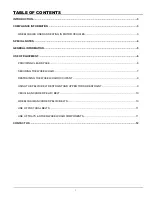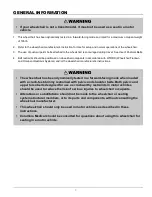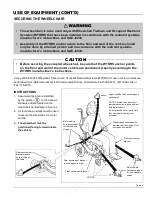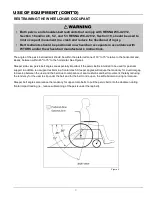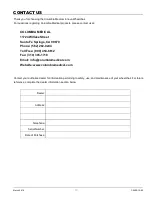
9
USE OF EQUIPMENT (CONT'D)
RESTRAINING THE WHEELCHAIR OCCUPANT
• Both pelvic- and shoulder-belt restraints that comply with RESNA WC-4:2012,
Section 18 and/or 4.6, 5.2, and 5.3 RESNA WC-4:2012, Section 19, should be used to
limit occupant movement in a crash and reduce the likelihood of injury.
• Belt restraints should be positioned on wheelchair occupants in accordance with
WTORS and/or the wheelchair manufacturer’s instructions.
The angle of the pelvic belt restraint should be within the preferred zone of 30° to 75° relative to the horizontal and,
ideally, between within 45º to 75° to the horizontal. See Figure 4.
Steeper side-view pelvic belt angles are especially important if the pelvic belt is intended to be used for postural
support in addition to occupant restraint in a frontal crash. Steeper angles will reduce the tendency for a vertical gap
to develop between the user and the belt due to compliance of seat cushions and belt movement, thereby reducing
the tendency for the user to slip under the belt and for the belt to ride up on the soft abdomen during normal use.
Steeper belt angles also reduce the tendency for upper-torso belts to pull the pelvic belt onto the abdomen during
frontal impact loading (ie., reduce submarining of the pelvis under the lap belt).
Figure 4


